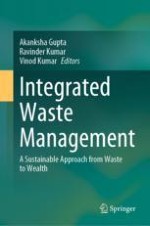2024 | OriginalPaper | Buchkapitel
Valorizing Cellulosic Biomass Waste into Valuable Nano-biosorbents
verfasst von : Sanjay Kumar, Ashish Kumar, Akshay Thakur, Pratibha Kumari
Erschienen in: Integrated Waste Management
Verlag: Springer Nature Singapore
Aktivieren Sie unsere intelligente Suche, um passende Fachinhalte oder Patente zu finden.
Wählen Sie Textabschnitte aus um mit Künstlicher Intelligenz passenden Patente zu finden. powered by
Markieren Sie Textabschnitte, um KI-gestützt weitere passende Inhalte zu finden. powered by
